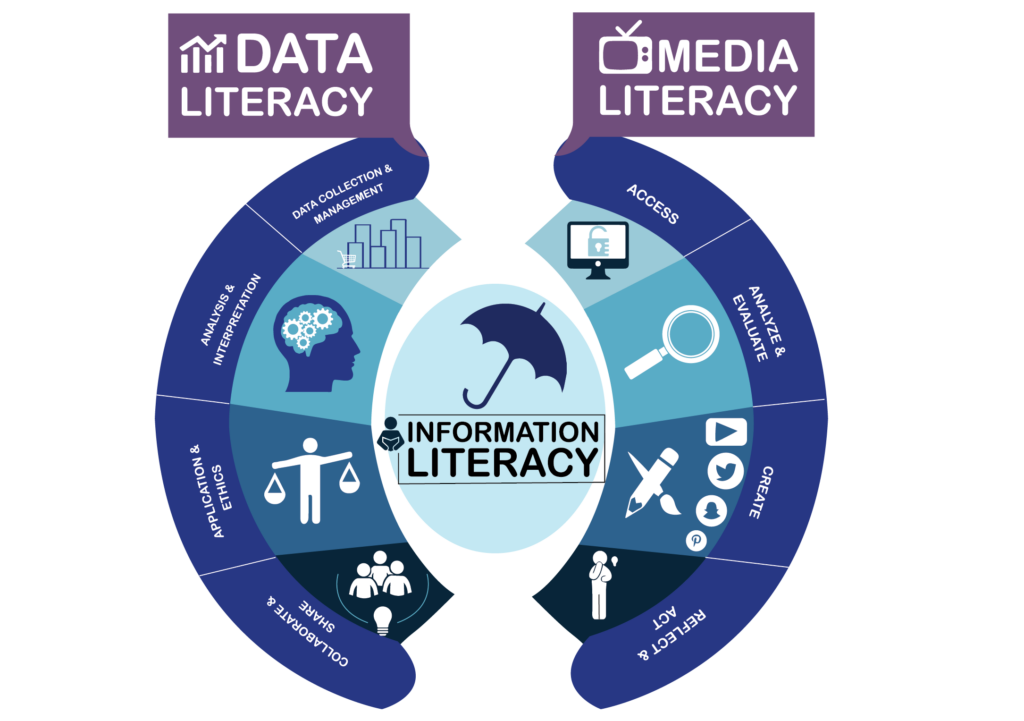Context Collapse: When Social Contexts Converge Online


@jorgebscomm for @empowervmedia*
 |
| Effective media literacy education goes beyond didactic instruction. 📷: The Journalist's Resource |
Media literacy draws upon various theoretical frameworks, including critical pedagogy, cultural studies, and cognitive science. Critical pedagogy emphasizes active learning and student agency, challenging power structures and promoting critical reflection on media messages (Freire, 1998). Cultural studies analyse the social and political contexts surrounding media production and consumption, highlighting the role of ideology and power dynamics (During, 1999). Cognitive science, meanwhile, explores the cognitive processes involved in media interpretation, informing the design of effective media literacy interventions (Potter, 2021).
Effective media literacy education goes beyond didactic instruction. It embraces active learning methods that encourage critical engagement with media content. This includes strategies such as:
• Deconstructing media messages: Analysing media texts for their construction, underlying assumptions, and potential biases (e.g., analysing news framing or identifying stereotypes) (Burnham & Arbeit, 2023).
• Source evaluation: Examining the credibility and trustworthiness of information sources, considering factors like authorship, publication date, and potential agendas (Melilli, 2022).
• Fact-checking and verification: Developing skills to discern reliable information from misinformation and disinformation through cross-referencing, fact-checking tools, and critical evaluation of evidence (Reese, 2014).
 |
| Data Literacy vs Media Literacy. 📷: The University of Tennessee Libraries |
Nurturing informed learners through media literacy education has significant implications across various aspects of higher education:
• Critical thinking skills: Media literacy fosters the development of higher-order thinking skills, such as analysis, synthesis, and evaluation, crucial for academic success and lifelong learning (Tommasi, et al., 2023; Mhlongo, et al., 2023).
• Civic engagement: An informed citizenry is essential for a healthy democracy. Media literacy empowers individuals to critically engage with public discourse and participate actively in civic life (Currie & Kelly, 2022; Kellner & Share, 2005).
Despite its potential, media literacy education faces challenges, including:
• Limited integration into curricula: Media literacy often remains marginalized within higher education, requiring further advocacy and integration into core programs (Breslin, 2021; Melilli, 2022).
• Rapidly evolving media landscape: The dynamic nature of media necessitates continuous adaptation and innovation in teaching methods and resources (Reese, 2014).
• Assessment and evaluation: Developing effective methods for assessing media literacy skills and the impact of educational interventions remains an ongoing challenge (Melilli, 2022).
Looking ahead, media literacy education must continue to evolve and adapt to address these challenges. Future directions include:
• Harnessing technology: Utilizing digital tools and platforms to create interactive and engaging learning experiences.
• Interdisciplinary collaboration: Fostering collaboration between media studies, communication, education, and other disciplines to develop comprehensive and effective curricula.
 |
| Media literacy is a vital tool for empowering individuals. 📷: Lessons of Life |
Comments